
How to Use Raspberry Pi 4B: Examples, Pinouts, and Specs
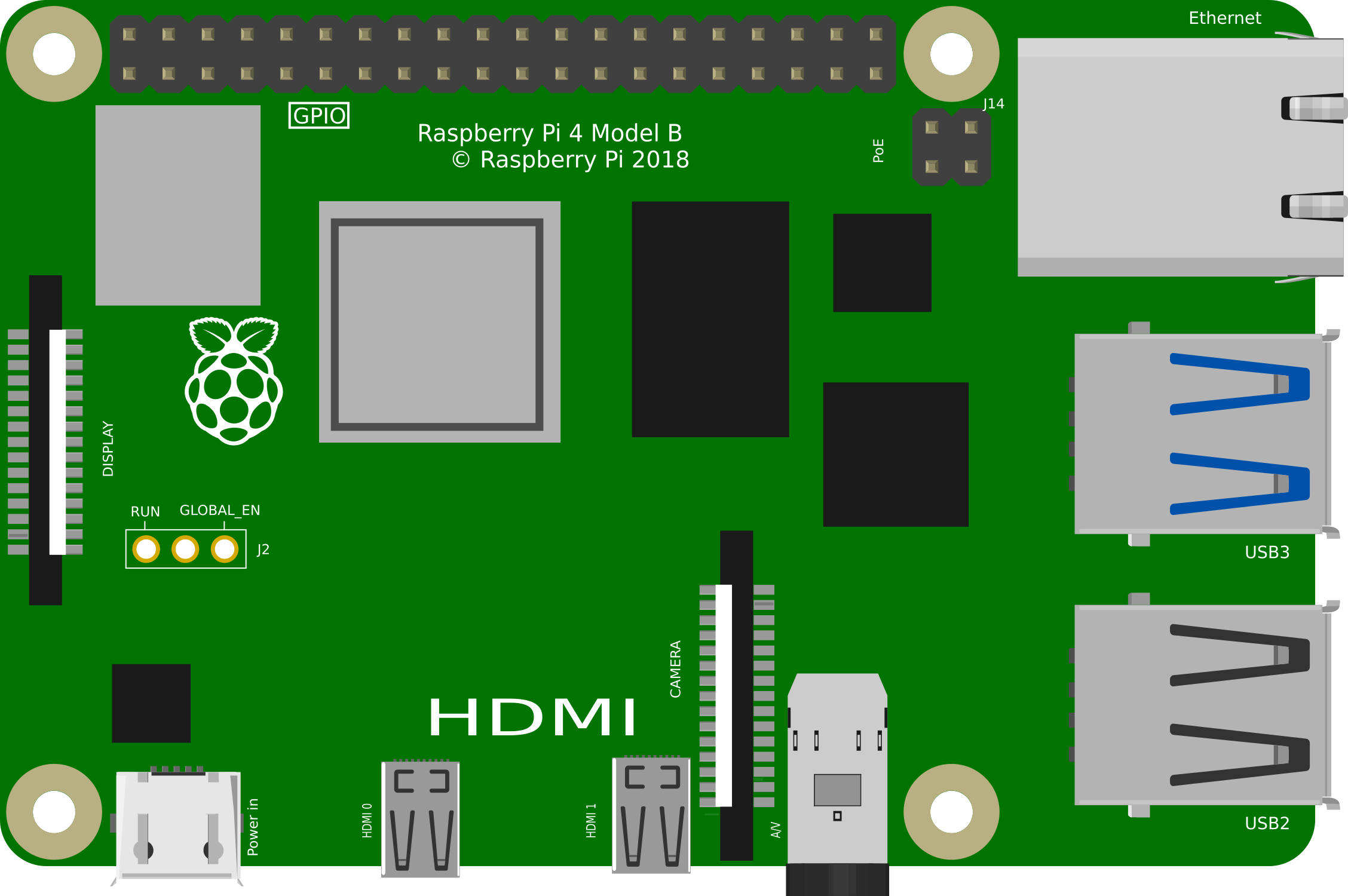
 Design with Raspberry Pi 4B in Cirkit Designer
Design with Raspberry Pi 4B in Cirkit DesignerIntroduction
The Raspberry Pi 4 Model B is the latest addition to the Raspberry Pi family of single-board computers. Known for its impressive computing power and compact size, the Raspberry Pi 4B is equipped with a quad-core Cortex-A72 (ARM v8) 64-bit processor, offering users a significant performance boost over its predecessors. This makes it suitable for a wide range of applications, from educational purposes to sophisticated electronics projects, including home automation, media centers, and even as a desktop replacement for light computing tasks.
Explore Projects Built with Raspberry Pi 4B
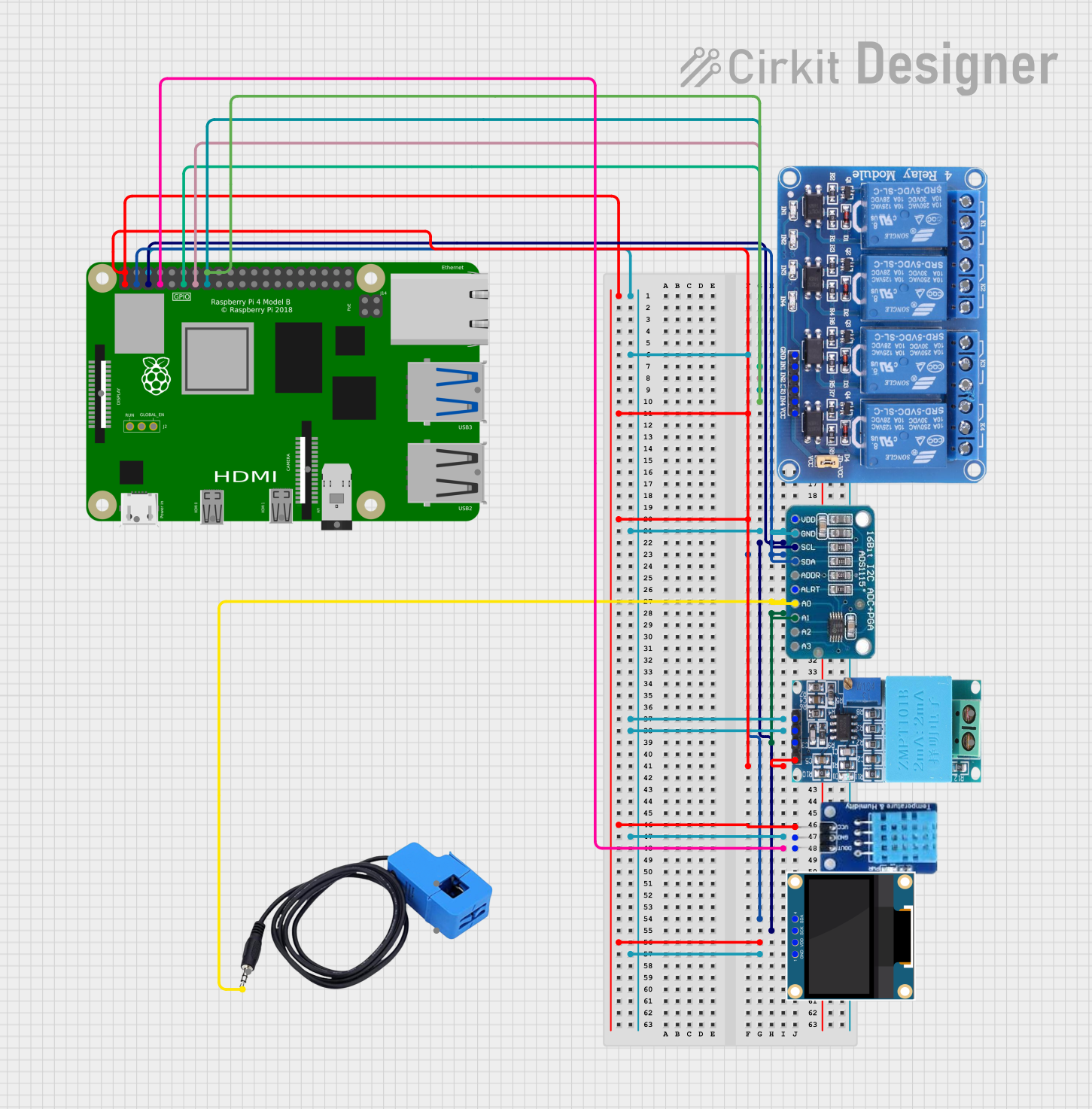
 Open Project in Cirkit Designer
Open Project in Cirkit Designer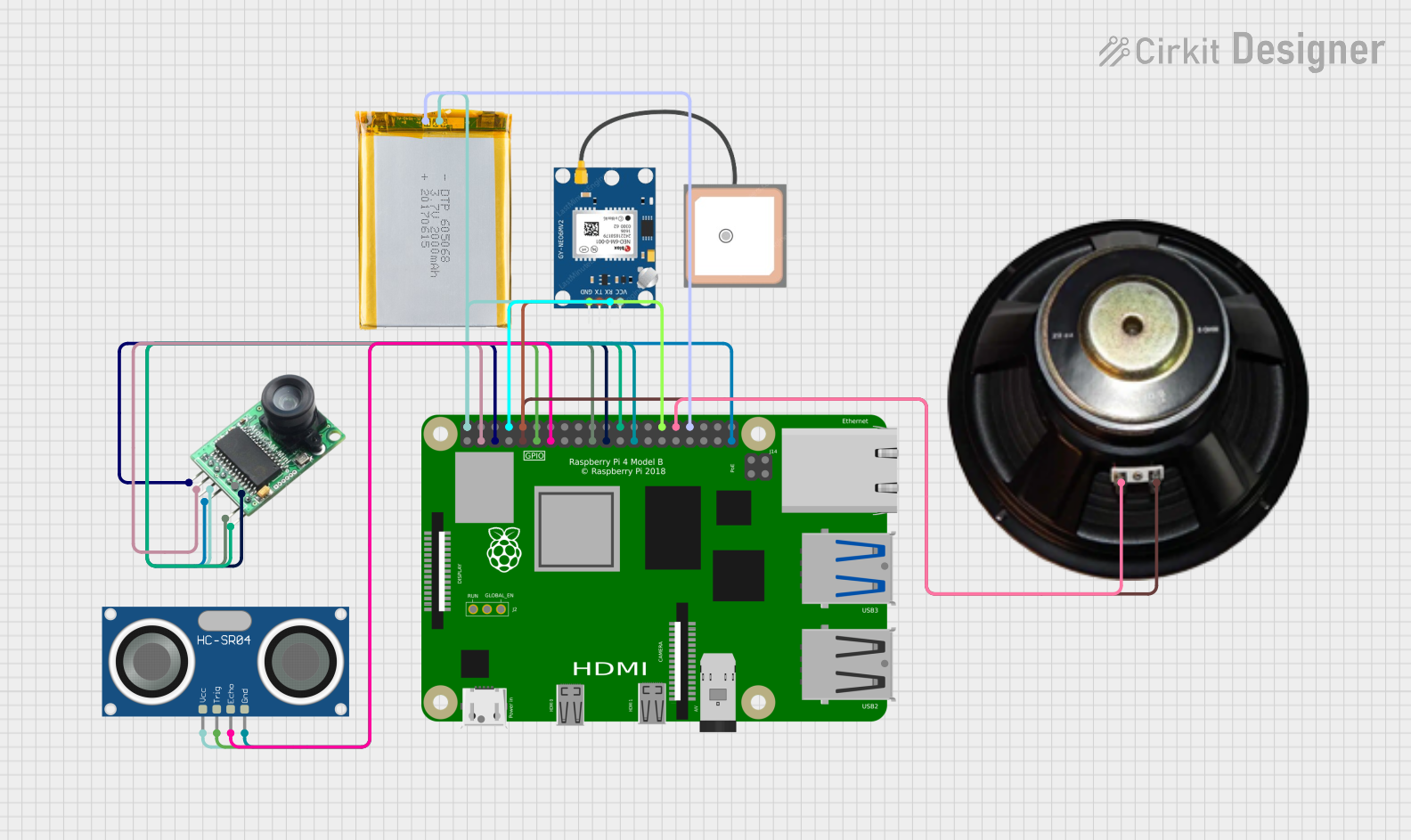
 Open Project in Cirkit Designer
Open Project in Cirkit Designer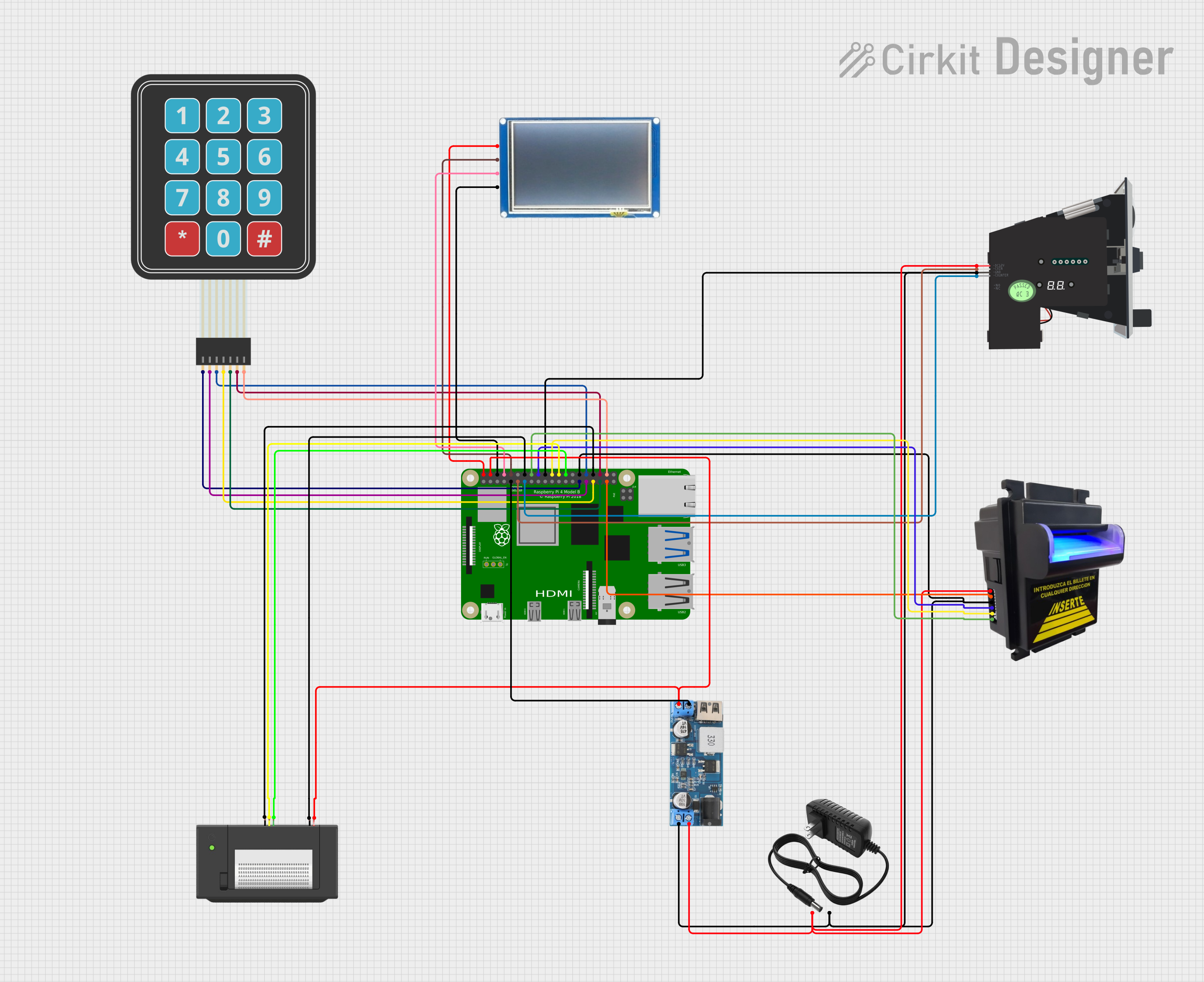
 Open Project in Cirkit Designer
Open Project in Cirkit Designer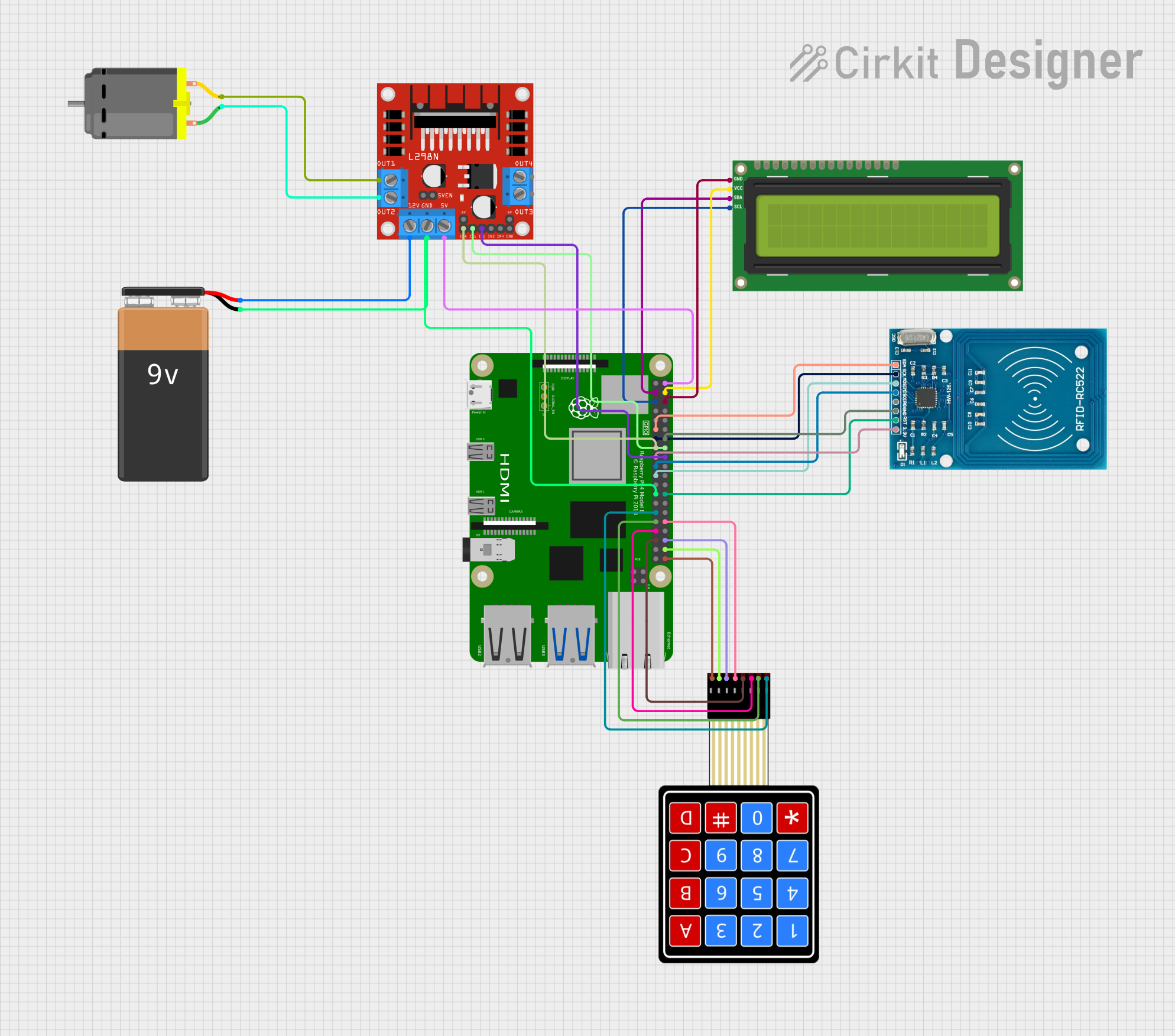
 Open Project in Cirkit Designer
Open Project in Cirkit DesignerExplore Projects Built with Raspberry Pi 4B

 Open Project in Cirkit Designer
Open Project in Cirkit Designer
 Open Project in Cirkit Designer
Open Project in Cirkit Designer
 Open Project in Cirkit Designer
Open Project in Cirkit Designer
 Open Project in Cirkit Designer
Open Project in Cirkit DesignerTechnical Specifications
Key Technical Details
- Processor: Broadcom BCM2711, Quad-core Cortex-A72 (ARM v8) 64-bit SoC @ 1.5GHz
- Memory: 2GB, 4GB, or 8GB LPDDR4-3200 SDRAM (depending on model)
- Connectivity:
- Gigabit Ethernet
- 2.4 GHz and 5.0 GHz IEEE 802.11ac wireless
- Bluetooth 5.0, BLE
- 2 × USB 3.0 ports
- 2 × USB 2.0 ports
- GPIO: Standard 40-pin GPIO header (fully backward-compatible with previous boards)
- Video & Sound:
- 2 × micro HDMI ports (up to 4kp60 supported)
- 2-lane MIPI DSI display port
- 2-lane MIPI CSI camera port
- 4-pole stereo audio and composite video port
- Multimedia:
- H.265 (4kp60 decode)
- H.264 (1080p60 decode, 1080p30 encode)
- OpenGL ES 3.0 graphics
- SD Card Support: Micro-SD card slot for loading operating system and data storage
- Power: 5V DC via USB-C connector (minimum 3A*)
- Operating Temperature: 0 – 50 degrees Celsius ambient
* A proper power supply that can provide sufficient current is crucial for stable operation.
Pin Configuration and Descriptions
| Pin Number | Description | Pin Number | Description |
|---|---|---|---|
| 1 | 3V3 Power | 2 | 5V Power |
| 3 | GPIO 2 (SDA1, I2C) | 4 | 5V Power |
| 5 | GPIO 3 (SCL1, I2C) | 6 | Ground |
| 7 | GPIO 4 (GPCLK0) | 8 | GPIO 14 (TXD0, UART) |
| 9 | Ground | 10 | GPIO 15 (RXD0, UART) |
| ... | ... | ... | ... |
| 39 | Ground | 40 | GPIO 21 (PCM_DOUT) |
Note: This table shows a subset of the GPIO pin configuration. For a complete pinout, refer to the official Raspberry Pi documentation.
Usage Instructions
Setting Up Your Raspberry Pi 4B
- Prepare an SD Card: Download the latest version of Raspberry Pi OS (formerly Raspbian) or another suitable operating system and write it to a micro-SD card.
- Connect Peripherals: Attach a keyboard, mouse, and monitor to the Raspberry Pi via the USB and micro HDMI ports.
- Power Up: Connect the USB-C power supply to the Raspberry Pi. Ensure that the power supply is capable of delivering the required current.
- Initial Configuration: Follow the on-screen setup instructions to configure your Raspberry Pi, including setting up Wi-Fi, locale, and account settings.
Important Considerations and Best Practices
- Power Supply: Always use a high-quality power supply that can provide at least 3A of current to ensure stable operation.
- Heat Management: The Raspberry Pi 4B can generate significant heat under load. Consider using a case with good ventilation, heat sinks, or even a fan for cooling.
- Software Updates: Regularly update your Raspberry Pi's software to ensure you have the latest security patches and improvements.
- Static Electricity: Handle your Raspberry Pi with care, as static electricity can damage the electronic components.
Troubleshooting and FAQs
Common Issues
- Pi Not Booting: Ensure the SD card is properly inserted and contains a valid operating system. Check the power supply and cables.
- Overheating: If the Pi is overheating, it may throttle performance or become unstable. Ensure proper cooling is in place.
- Network Issues: If you're having trouble with Wi-Fi or Ethernet, check your network settings and ensure the Pi is within range of your router.
Solutions and Tips
- Red Power LED Not Lit: This usually indicates a power supply issue. Try a different USB-C cable and power adapter.
- Green LED Blinks in a Specific Pattern: Refer to the Raspberry Pi's documentation for the LED blink codes, which can help diagnose SD card and boot issues.
- Performance Issues: Close unnecessary applications and tabs, or consider upgrading to a model with more RAM if persistent performance issues occur.
FAQs
Q: Can I use the Raspberry Pi 4B as a desktop computer? A: Yes, with adequate peripherals and a suitable operating system, the Raspberry Pi 4B can function as a basic desktop computer.
Q: What is the maximum micro-SD card size supported by the Raspberry Pi 4B? A: The Raspberry Pi 4B supports micro-SD cards up to 256GB, but larger cards may work if they are formatted correctly.
Q: Can I power the Raspberry Pi 4B through the GPIO pins? A: It is not recommended to power the Raspberry Pi 4B through the GPIO pins as it bypasses the Pi's power protection circuitry and can lead to damage.
For more detailed troubleshooting, visit the official Raspberry Pi forums and documentation.
Note: This documentation is provided for informational purposes only and is subject to change without notice.